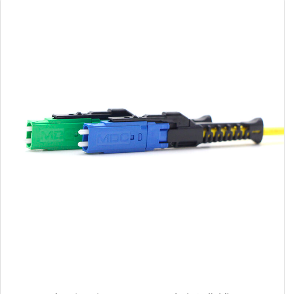目录
Introduction
The development of SMT manufacturing (Surface Mount Technology) has revolutionized how electronic devices are designed and assembled. By offering precision, scalability, and efficiency, SMT manufacturing has become essential for industries seeking to produce advanced technologies. From consumer electronics to industrial systems, SMT is driving innovation in every sector.
What is SMT Manufacturing?
SMT manufacturing is a process where electronic components are mounted directly onto the surface of printed circuit boards (PCBs). This eliminates the need for through-hole assembly, which requires drilling into PCBs. By automating placement and soldering, SMT manufacturing accelerates production, increases component density, and improves reliability.
Detailed SMT Manufacturing Processes
Preparation and Solder Paste Application
The journey begins with applying solder paste to specific areas of the PCB using a stencil. This paste contains solder particles suspended in flux, ensuring strong connections during reflow soldering.
Component Placement
Automated pick-and-place machines arrange surface-mounted components on the PCB. These machines handle thousands of components per minute with exceptional accuracy, enabling intricate designs.
Reflow Soldering
Once components are placed, the PCB is heated in a reflow oven. The heat melts the solder paste, creating durable bonds between the PCB and its components.
Quality Assurance
Automated Optical Inspection (AOI) systems, X-ray inspections, and functional testing verify that the PCB meets design specifications and quality standards.
5. Integration and Assembly
Completed PCBs are integrated into devices such as smartphones, medical equipment, automotive modules, and industrial systems.
Advantages of SMT Manufacturing
Space-Efficient Designs
SMT supports compact layouts by allowing for high-density component placement. This makes devices smaller and lighter without compromising functionality.
High-Speed Production
Automation in SMT manufacturing dramatically reduces assembly time, making it ideal for mass production of electronic devices.
Cost-Effective Solutions
By streamlining workflows and reducing manual labor, SMT delivers cost-efficient production for manufacturers.
Enhanced Reliability
Surface-mounted components are resilient to mechanical stress and vibration, ensuring stable performance over time.
Supports Innovation
SMT enables complex designs and cutting-edge technologies by accommodating diverse components and layouts.
Applications of SMT Manufacturing
Consumer Electronics
Devices like smartphones, tablets, gaming consoles, and wearables leverage SMT manufacturing for compact designs and high functionality.
Automotive Electronics
Advanced systems like engine controls, infotainment modules, and ADAS rely on SMT-assembled PCBs for efficient and reliable operation.
Medical Devices
SMT powers portable health monitors, imaging tools, and diagnostic equipment by ensuring precision and reliability.
Telecommunications
Networking equipment, 5G modules, and IoT devices depend on SMT manufacturing for performance scalability.
Industrial Equipment
Automation systems and IoT-enabled machinery utilize SMT technology for optimized connectivity and processing power.
Innovative Trends in SMT Manufacturing
Miniaturization and Micro-Assembly
As electronic devices shrink in size, SMT continues to evolve, enabling the assembly of ultra-small components with high precision.
Flexible PCBs
Wearable technology and foldable gadgets are driving the adoption of SMT techniques for flexible circuit boards.
Eco-Friendly Practices
Lead-free soldering and energy-efficient methods are gaining prominence as manufacturers strive for sustainability.
Industry 4.0 Integration
AI-powered inspections, IoT-enabled monitoring, and robotics are enhancing SMT manufacturing, ensuring greater efficiency and accuracy.
Advanced Materials
Emerging materials like heat-resistant substrates and innovative solder alloys are expanding SMT capabilities for challenging applications.
The Role of SMT in Shaping the Future
As the demand for high-tech devices grows, SMT manufacturing continues to push boundaries in electronics assembly. Its ability to handle complex designs, integrate automation, and deliver reliability makes it a critical process across industries. From powering AI-driven systems to supporting sustainable production, SMT is integral to the future of electronics.
Conclusion
SMT manufacturing has transformed the electronics landscape by enabling compact, efficient, and high-performance devices. Its versatility, scalability, and precision have made it a cornerstone in producing technologies that define modern life. As SMT evolves alongside advancements in material science and automation, it promises to drive innovation and redefine electronics assembly for years to come.
0









